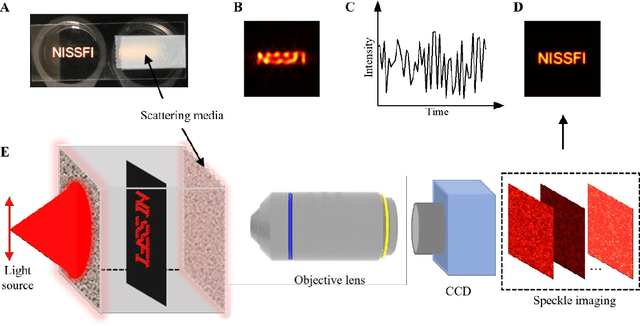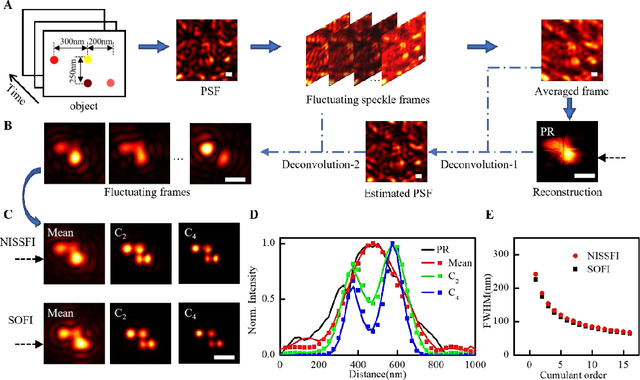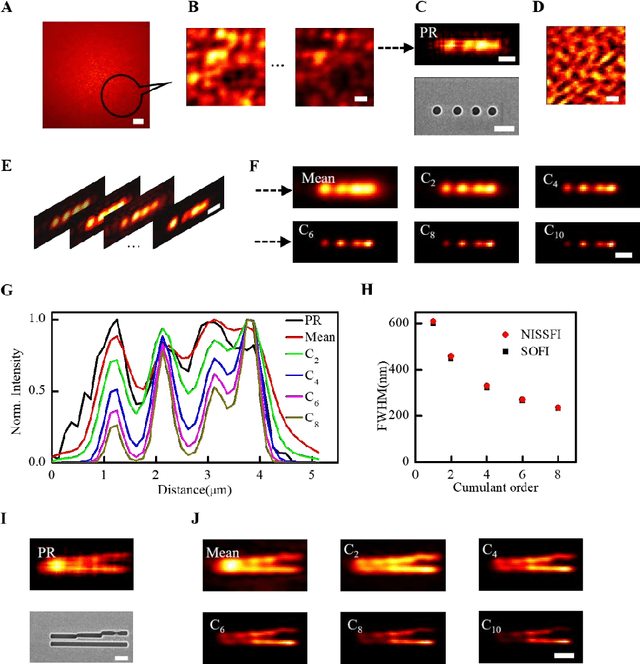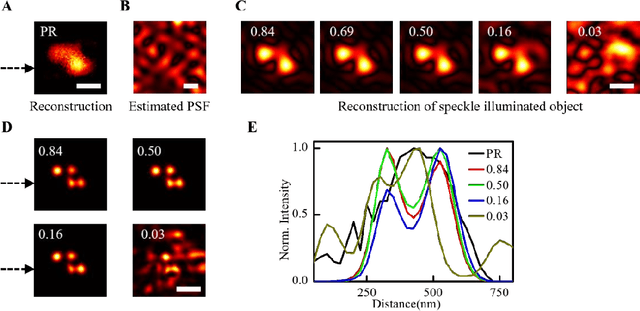Non-invasive super-resolution imaging through scattering media using fluctuating speckles
Paper and Code
Sep 16, 2021



Extending super-resolution imaging techniques to objects hidden in strongly scattering media potentially revolutionize the technical analysis for much broader categories of samples, such as biological tissues. The main challenge is the media's inhomogeneous structures which scramble the light path and create noise-like speckle patterns, hindering the object's visualization even at a low-resolution level. Here, we propose a computational method relying on the object's spatial and temporal fluctuation to visualize nanoscale objects through scattering media non-invasively. The fluctuating object can be achieved by random speckle illumination, illuminating through dynamic scattering media, or flickering emitters. The optical memory effect allows us to derive the object at diffraction limit resolution and estimate the point spreading function (PSF). Multiple images of the fluctuating object are obtained by deconvolution, then super-resolution images are achieved by computing the high order cumulants. Non-linearity of high order cumulant significantly suppresses the noise and artifacts in the resulting images and enhances the resolution by a factor of $\sqrt{N}$, where $N$ is the cumulant order. Our non-invasive super-resolution speckle fluctuation imaging (NISFFI) presents a nanoscopy technique with very simple hardware to visualize samples behind scattering media.
 Add to Chrome
Add to Chrome Add to Firefox
Add to Firefox Add to Edge
Add to Edge